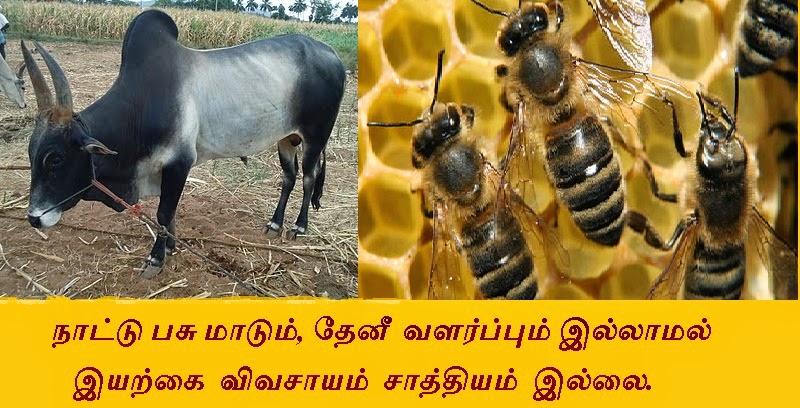நரேந்தர் மோடி வெற்றி பெறுவது உறுதி !
கொங்கதேசம் அமைவது உறுதி !
என்று ஏற்கனவே சொன்னது போல நரேந்திர மோடி வெற்றி பெற்று விட்டார்.
இனி, கொங்கதேசம் உருவாவதற்கான சூழலை, நாம் தான் ஏற்படுத்தியாக வேண்டும்.
இந்த தேர்தல் சொல்வது என்ன?
* தி.மு.க, தே.மு.தி.க போன்ற முற்போக்கு திராவிட கட்சிகளுக்கும்,
தமிழர், தேசியம் என்று பேசி மக்களை முட்டாள் ஆக்கிய ம.தி.மு.க போன்ற கட்சியும்
அடியோடு தோத்துட்டாங்க. இது மிகவும் வரவேற்க வேண்டிய விசியம்.
* விடுதலை சிறுத்தைகள், புதிய தமிழகம், பகுஜன்
சமாஜ் போன்ற தலித் மாப்பியாகளுக்கும் மரண அடி கொடுக்கப்பட்டுவிட்டது.
* சிறுபான்மையினர் என்னும் பெயரை சொல்லி பிழைப்பு
நடத்தி வந்த முஸ்லிம் கட்சிகளுக்கும் செருப்படி கிடைத்துள்ளது.
* திடீர் என்று முளைத்த ஆம் ஆத்மி கட்சியை, அந்த
கட்சியின் சின்னமான வெளக்குமாத்தாலேயே துரத்தி அடிச்சுட்டாங்க.
* பெண்ணியம், அடிமைத்தனம், முதலாளித்துவம் என்று
பேசி பலரின் வாழ்க்கையை குட்டிச்சுவர் ஆக்கிய கம்யுனிஸ்ட் கட்சி, தேசிய கட்சி என்ற
அந்தஸ்தையே இழந்துவிட்டது.
* மேலே சொன்ன அனைத்து அட்டூழியத்தையும்,
ஊக்குவிச்ச காங்கிரஸ் கட்சி, எதிர் கட்சி என்ற அந்தஸ்த்து கூட பெறாமல் படுதோல்வி
அடைந்திருப்பது நல்ல விசியம்.
* பாரத தேசத்தில், மிகபெரும் சக்தியாக உருவெடுத்துள்ள பாரதிய ஜனதா கட்சியும், தமிழகத்தில் பிற்போக்கு சக்தியான அ.இ.அ.தி.மு.க கட்சியும்
வெற்றி பெற்றதது வரவேற்க வேண்டிய விசியம். ஆனால், அ.தி.மு.க வும் ஒரு திராவிட கட்சி என்பது நமக்கு எதிரானது. தமிழ்நாட்டை 3 மாநிலமாக பிரிக்காமல் பாரதிய ஜனதாவால், இங்கு காலூன்ற முடியாது என்பதை புரிந்து கொண்டு மாநில மறு ஆய்வு குழு(State Re-Organization Committee) ஏற்படுத்த வேண்டும்.
* தெலங்கான தனி மாநிலமாவதற்காக பல போராட்டங்களை நடத்தி, பல எதிர்ப்புகளையும் மீறி தெலங்கான ராஷ்ட்ர சமிதி ஜெயுச்சுருக்கு. ஜெய் தெலங்கான என்ற தனி மாநில கோஷத்தை மட்டுமே முன் வைத்து, அதில் வெற்றியும் பெற்று விட்டார்கள்.
நரேந்தர் மோடியிடம் கொங்கதேச மக்கள் எதிர்பார்ப்பது
என்ன?
1. கொங்கதேசம் - தனி
மாநிலம்
கொங்கதேசம் தனி
மாநிலாமாக வேண்டும் என்று கரூர் பாரதிய ஜனதா சார்பில் கடந்த 2௦௦9ம் ஆண்டே
தீர்மானம் நிறைவேற்றபட்டு இருக்கிறது.
அடிப்படையில் இஸ்லாமியன், வெள்ளைக்காரன்,நேரு போன்றவர்கள்
வரைந்த இந்திய வரைபடங்களை தவிர்த்துவிட்டு, மாநில மறுசீரமைப்பு குழு ஏற்படுத்தி, கலாசார
அடிப்படையிலான பண்டைய பாரத வர்ஷத்தின் 56 தேசங்களையும் ஆய்வு செய்து மாநிலங்கள்
பிரிக்கப்பட வேண்டும். அதன் அடிப்படையில் சேர தேசமான கொங்கதேசம் பிரிக்கப்பட
வேண்டும் என்பது கொங்கர்களின்(68
சாதிகள்) நீண்டநாள் கோரிக்கை.
2. நாட்டு பசு மாடு
– தேசிய விலங்கு
நாட்டு பசு மாட்டை (Bos Indicus) தேசிய விலங்காக
அறிவிக்க வேண்டும்.
இன்னைக்கு நடக்குற
பல பிரச்சனைகளுக்கு, நாட்டு பசு மாடுகள் குறைஞ்சுட்டு போறது தான் காரணம். நாட்டு பசு மாட்டு பாலில், நோய் உண்டு பண்ணகூடிய A1 புரதம் இல்லை. மாறாக, நோய் எதிர்ப்பு சக்தி மிகுந்த A2 புரதம் இருக்கிறது. இப்படி ஒரு பொக்கிஷம் நம்மிடையே இருந்து அழியாமல் காப்பாற்ற, நாட்டு பசு மாட்டை தேசிய விலங்காக அறிவிக்க வேண்டும்.
3. ரசாயனம் இல்லாத இயற்கை விவசாயம்
இரசாயன வெள்ளாமையின் தீமையும்,
இயற்கை வெள்ளாமையின்
நன்மையும்.
ரசாயன உரம், பூச்சிகொல்லி
மருந்துகள் மற்றும் களைகொல்லி மருந்துகளால், சுற்றுச்சூழலை
மாசுபடுத்தி, கால்நடைகளுக்கும், மனித
குலத்திற்கும் பெரும் ஆபத்தாக மாறிவிட்டது.
களைக்கொல்லி மருந்துகள் பயன்படுத்தி மண்ணும் மலடாகிவிட்டது. மனிதனும்
மலடாகி கொண்டு இருக்கிறான்.
ரசாயன உரம் போட்டு, களைகொல்லி மற்றும் பூச்சி
கொல்லி மருந்து அடிச்சு, விளைவிக்குற காய், கனிகளை
பலதரப்பட்ட மக்களும் சாப்பிட்டு, நாமும் சாப்பிட்டு, குடல்
புற்றுநோய், மார்பக
புற்றுநோய், இதய
நோய், ஹார்மோன்
கோளாறுகள், ஆட்டிசம்
போன்ற பல விதமான கொடிய நோய்களுக்கு ஆட்பட்டு மருத்துவமனையே கதியாக கிடக்கும்
நிலைமையில் இருக்கிறோம். தற்போது பிறக்கும் குழந்தைகள் அதிக எண்ணிக்கையில், பல
வகையில் ஊனமாக பிறக்கிறது.
இதனால் தான், இன்று புதிது புதிதாக
மருத்துவ கூடங்கள் பெருகி வருகிறது. பல மருத்துவர்கள் அவர்கள் வீட்டில் இயற்கை
முறையில் விளைவித்த பொருட்களை தான் பயன்படுத்துகின்றனர். ஆனால், மருத்துவர்கள் இயற்கை
விவசாயத்தையும், சித்த, ஆயுர்வேத மருந்துகளின்
நன்மைகளை பற்றி தொழில் பாதிக்கும் என்று மூச்சு கூட விடுவதில்லை.
“நோயற்ற வாழ்வே குறைவற்ற செல்வம்” என்பது பழமொழி.
அதற்கேற்ப வாழ்வதே
வாழ்க்கை.
இயற்கை வெள்ளாமை செய்வதற்கு நாட்டு பசு மாடும், தேனீ வளர்ப்பும் மிக
முக்கியம்.
நாட்டு பசு மாட்டிலிருந்து தான் பஞ்சகாவ்யா, ஜீவாமிர்தம் தயாரிக்க
முடியும். நாட்டு பசு மாடு இல்லாமல் ஜீரோ பட்ஜெட், இயற்கை வேளாண் பண்ணை
அமைக்க முடியாது. ரசாயன களைகொல்லி மற்றும் பூச்சிகொல்லி மருந்துகளை பயன்படுத்தாமல்
இருந்தால் தான் நுண்ணுயிர் பெருகும். நாட்டு பசு மாட்டு சாணத்தில் 33,OOO கோடி நுண்யிர்களை
வெளியேற்றுகிறது. பொருளாதார ரீதியாக பார்த்தால் நாட்டு பசுவை முறையாக
பயன்படுத்தினால் 7௦
% உரம் உற்பத்தியை தவிர்க்க முடியும். நாட்டு பசு மாட்டின் பாலில் நோய் எதிர்ப்பு
சக்தி மிகுந்த A2 புரத சத்து உள்ளது. சீமை
மாட்டில் A1 புரதம் என்ற நோய்
உற்பத்தி செய்ய கூடிய பால் தான் கிடைக்கும். இயற்கை விவசாயம் செய்து அனைவருக்கும்
நஞ்சில்லா உணவளிபோம்.
தேனீ இனம் அழிந்தால், விவசாயத்தில்
மகரந்த சேர்க்கை இல்லாமல் உணவு உற்பத்தி மிக குறைந்து, உணவு இல்லாமல் பட்டினி
சாவு நிகழும். தேனீ இனம் அழிந்தால் அடுத்த சில ஆண்டுகளில் மனித இனம் அழிந்துவிடும்
என வேளாண் நிபுணர்கள் அஞ்சி
நடுங்குகிறார்கள்.
இரசாயன முறையில் விவசாயம் செய்வதால், மண் வளம் கெட்டு, நிலத்தடி நீர் மாசுபட்டு
மனிதனுக்கு பல நோய்கள் வந்து சிரமப்பட்டு சீரழிந்து இறந்து கொண்டு இருக்கிறான்.
ஆனால், இரசாயனம்
இல்லாமல் விவசாயம் செய்தால் பூச்சிகளும், புழுக்களும்
நாசம் செய்து உற்பத்தி மிககுறைந்து உணவு இல்லாமல், பட்டினியாக துடிதுடித்து
இறக்கிறான்.
இயற்கையாக கிடைக்கும் பூச்சிகொல்லி மருந்துகளை நாமே தயாரித்து, இயற்கை விவசாயம் செய்யும்
முறையை கற்றுகொண்டால் மட்டுமே விவசாயத்தை லாபகரமாக்க முடியும். ஓரளவுக்கு மனித
குலத்தின் நோய்களை குறைக்க முடியும். அதனால், அனைவரும்
இயற்கை விவசாயம் செய்ய முன் வர வேண்டும்.
4. திருஅயோத்தி ஸ்ரீ ராமர் கோயில்
108 திவ்ய தேச திருக்கோயில்களில் ஒன்றான திருஅயோத்தியில் ஸ்ரீ ராமர்
கோயில் கட்ட வேண்டிய தருணம் வந்துவிட்டது. ஸ்ரீ ராமர் கோயில் கட்டினால் தான் இப்ப
நடக்குற பல ஒழுக்ககேடான விசயங்கள் குறையும்.
பாபர் காலத்தில் இடிக்கப்பட்ட நம்முடைய
முக்கியமான கோயில்களில் ஒன்று திருஅயோத்தி என்பது எல்லாருக்கும் தெரியும். 108 திவ்ய தேச கோயில்களில் அயோத்தியும் ஒன்று. நம் கொங்கதேசதிற்கும், ஸ்ரீ ராமர்க்கும், நெருங்கிய தொடர்பு இருக்கிறது. நம்ம ஊரில் புரட்டாசி சனிக்கிழமைகளில் பல ராமசாமி
கோயில்களிலும், ராமர் கோயில்களிலும், விசேஷ பூஜைகள் தொடர்ந்து நடைபெறுவதையும், இன்றும் பலரின் பெயரில்
ராமசாமி, ராமர், என்று இருப்பதையும் பார்க்கலாம். ஸ்ரீ ராம ஜென்ம பூமிக்கும், கங்கர்களாகிய
கொங்கர்களுக்கும் உள்ள பூர்வீக பந்தத்தால் தான் நம்ம போன தலகட்டுல இருந்த பல பேர் பாபர்
மசூதி இடிக்கறதுக்கு போனாங்க. அவங்களோட உழைப்பு வீண் போக கூடாது. ராமாயணம் எழுதிய
கம்பருக்கு கொங்கதேச வள்ளல்கள் பலர் உதவி செய்தனர். எல்லாருடைய எதிர்பார்ப்பும் சீக்கிரமா
அங்க ராமர் கோயில் கட்டியே ஆகணும்ங்கறது தான்.
5. மதுரா ஸ்ரீ கிருஸ்ணர் கோயில்
ஸ்ரீ கிருஷ்ணர் பொறந்த ஊர் மதுரா. 108 திவ்யதேச திருக்கோயில்களில் மதுரா ஸ்ரீ கிருஸ்ணர் கோயிலும் ஒன்று. ஆவுரங்கசிப் காலத்தில் கிருஷ்ணர் கோயிலை இடித்துவிட்டு மசூதி கட்டப்பட்டுள்ளது. இன்று இருக்கும் கிருஷ்ணர் கோயில், கார்பரேட் நிறுவனத்தால் சற்று தள்ளி தான் கட்டபட்டு உள்ளது. அதை மறுபடியும் ஸ்ரீ கிருஷ்ண ஜென்ம பூமியிலே கட்டப்பட வேண்டும்.
6. காசி ஸ்ரீ
விஸ்வநாதர் கோயில்
கங்கை நதிக்கரையில் இருக்கும் வாரணாசியும், காசியும் ஒன்றே. பாடல் பெற்ற 275 ஸ்தலங்களில் ஸ்ரீ காசி
விஸ்வநாதர் கோயிலும் ஒன்று. போன தலகட்டு வரைக்கும் வாரணவாசி கவுண்டன், காசிலிங்கம் போன்ற பெயர்கள் இருந்ததை பார்க்கும் பொது, நமக்கும் அந்த கோயிலுக்கும் பூர்வ பந்த தொடர்பு இருப்பதை அறியலாம். அவுரங்கசிப்பின் கொடுங்கோல் ஆட்சியில் இந்த கோயில் தரைமட்டமாக்கபட்டது. தற்போது இருக்கும் கோயில், சற்று தள்ளி கட்டப்பட்டு இருக்கிறது. அங்கு இருக்கும் சிவன் சிலையும் புதியது. இன்னைக்கு இருக்கும் ஞானவாபி மசூதி (பெனராஸ் தீர்த்த
கிணறு) தான் காசி ஸ்ரீ விஸ்வநாதர் கோயில் இருந்த இடம். பழைய சிலை இன்றும் அந்த தீர்த்த கிணற்றில் தான் புதைந்திருக்கிறது. அதே இடத்தில் கோயில் கட்ட வேண்டும் என்பதே எல்லாருடைய வேண்டுகோள்.










